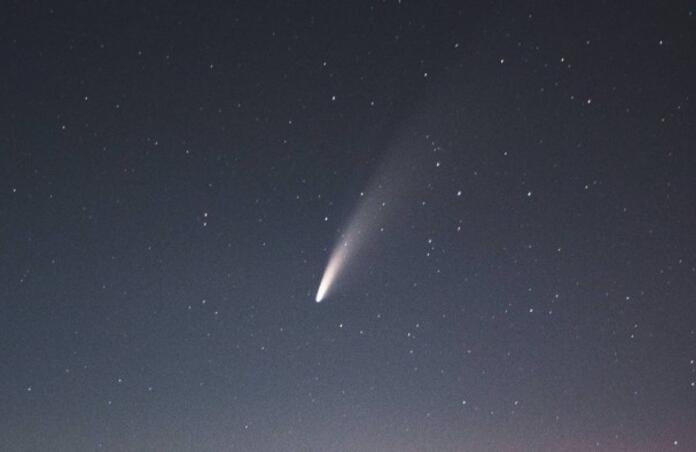Comet NEOWISE is Now Visible for a Limited Time

NASA’s NEOWISE space telescope just discovered a new comet making its way through the solar system, and it will make its closest pass by Earth on July 22nd.
The new icy visitor was discovered earlier this year on March 27th by NASA’s Near-Earth Object Wide-field Infrared Survey Explorer (NEOWISE). The comet, nicknamed Comet C/2020 F3 NEOWISE, reached its perihelion (its closest approach to the Sun) on July 3rd and is on its way back out of the solar system. Although, if you haven’t seen it already, amateur astronomers and skywatchers will have a chance to observe it again soon. On July 22nd, Comet NEOWISE will closely pass by Earth (within 64 million miles), offering a rare opportunity to see its lovely and bright tail streaking across the sky. The comet ends its near-Earth journey in August—and it won’t be visible again for another 6,800 years.
Comet NEOWISE

The NEOWISE telescope, formerly called the Wide-Field Infrared Survey Explorer (WISE) and not intended to study asteroids and comets, discovered the comet with its two infrared channels. The channels detect heat signatures emitted from objects as they pass by the Sun, and the comet caught it in action. Though it was only recently found, astronomers are already studying its composition and structure. Joseph Masiero, the NEOWISE deputy principal investigator, states that "From its infrared signature, we can tell that it is about 5 kilometres [3 miles] across, and by combining the infrared data with visible-light images, we can tell that the comet's nucleus is covered with sooty, dark particles left over from its formation near the birth of our Solar System 4.6 billion years ago.”
While Comet NEOWISE has been visible to NASA researchers for some time now, it will soon be visible to amateur astronomers too—but not for much longer! NASA hosted a live teleconference on Wednesday, July 15th, which discussed the comet, its progression, and answered public questions, so be sure to check it out! For more info about where and when the comet will be visible, check here.